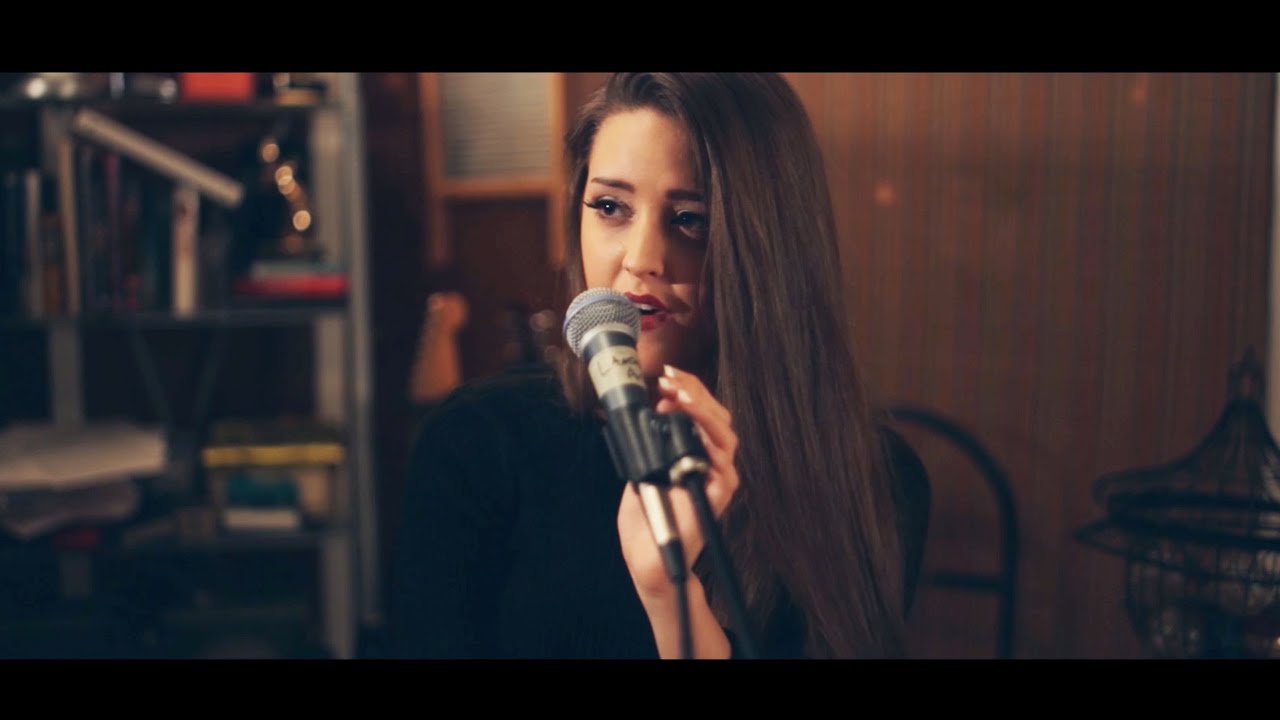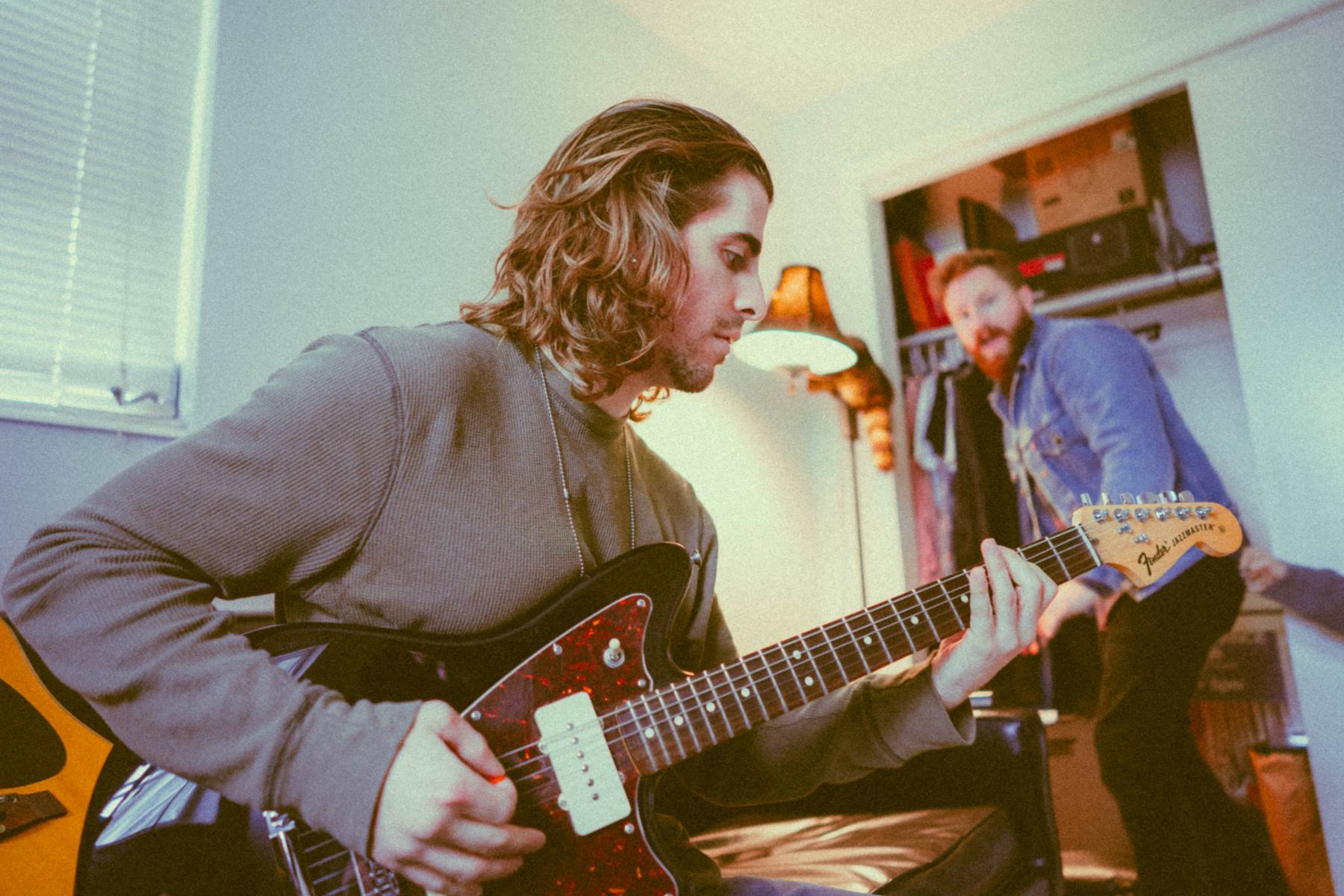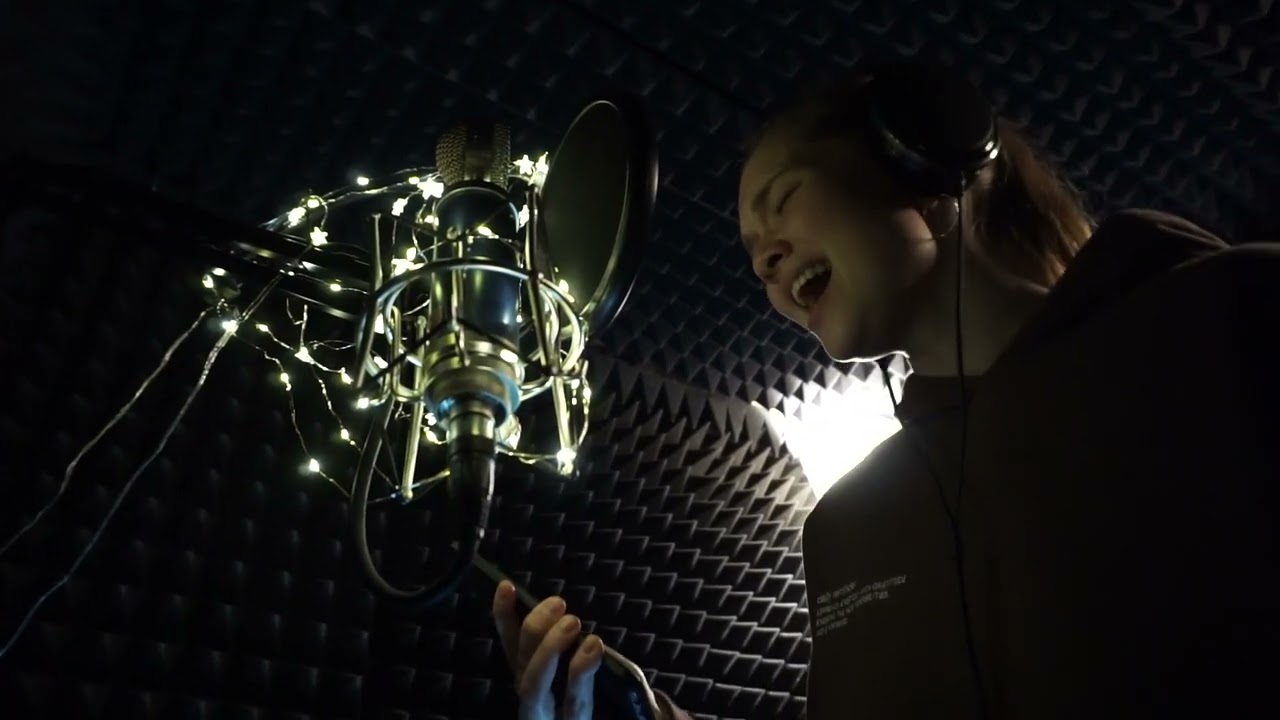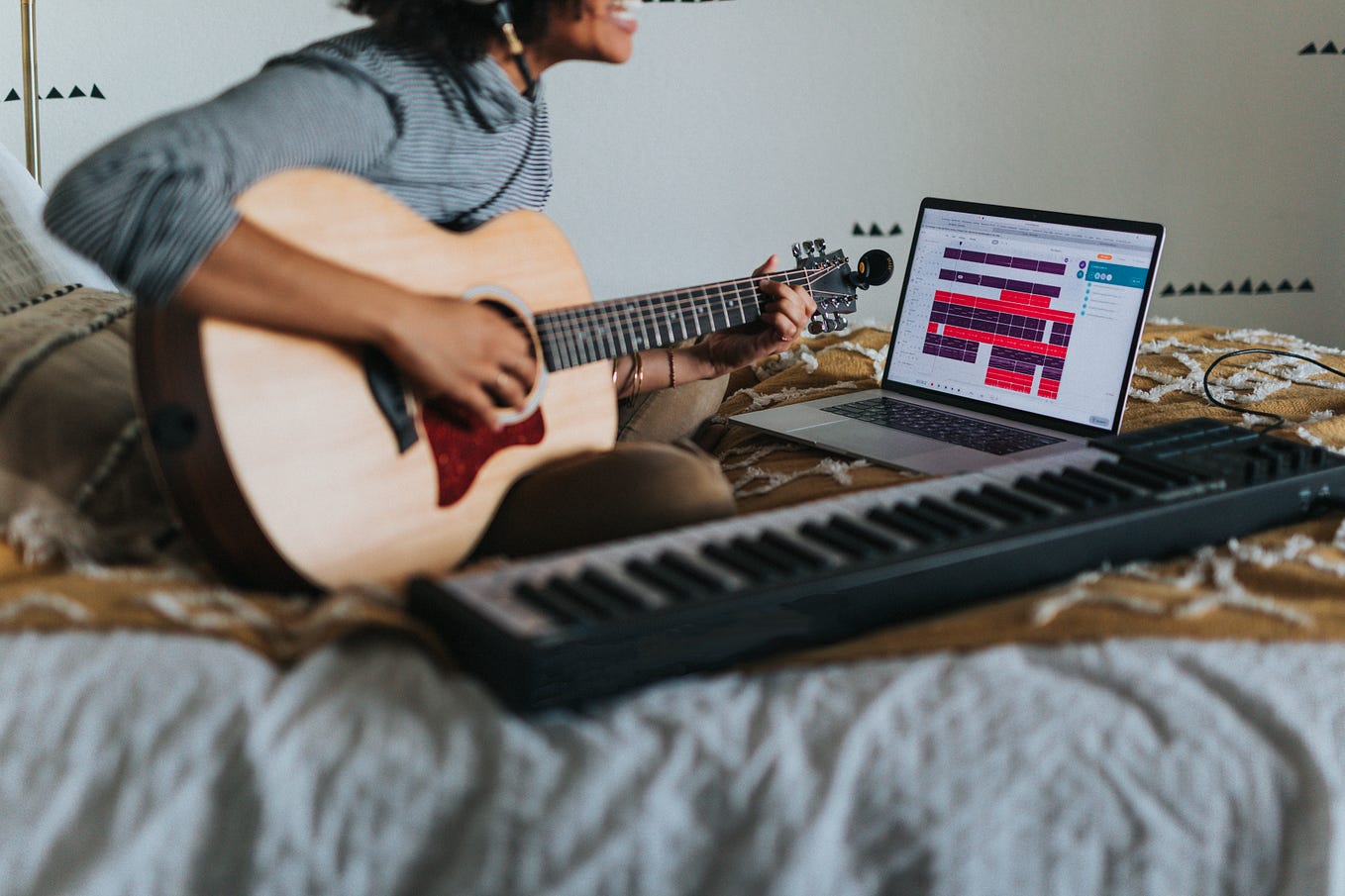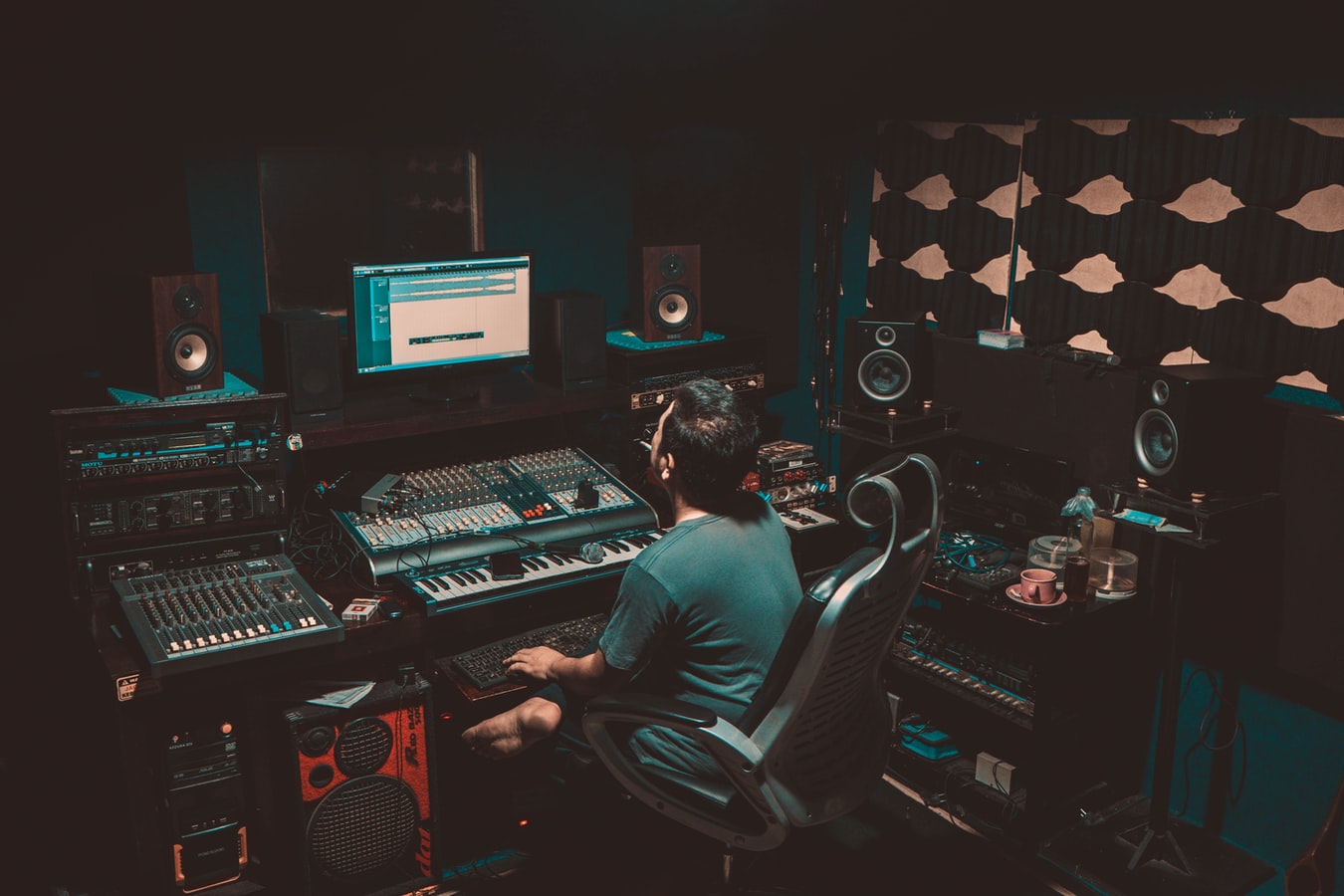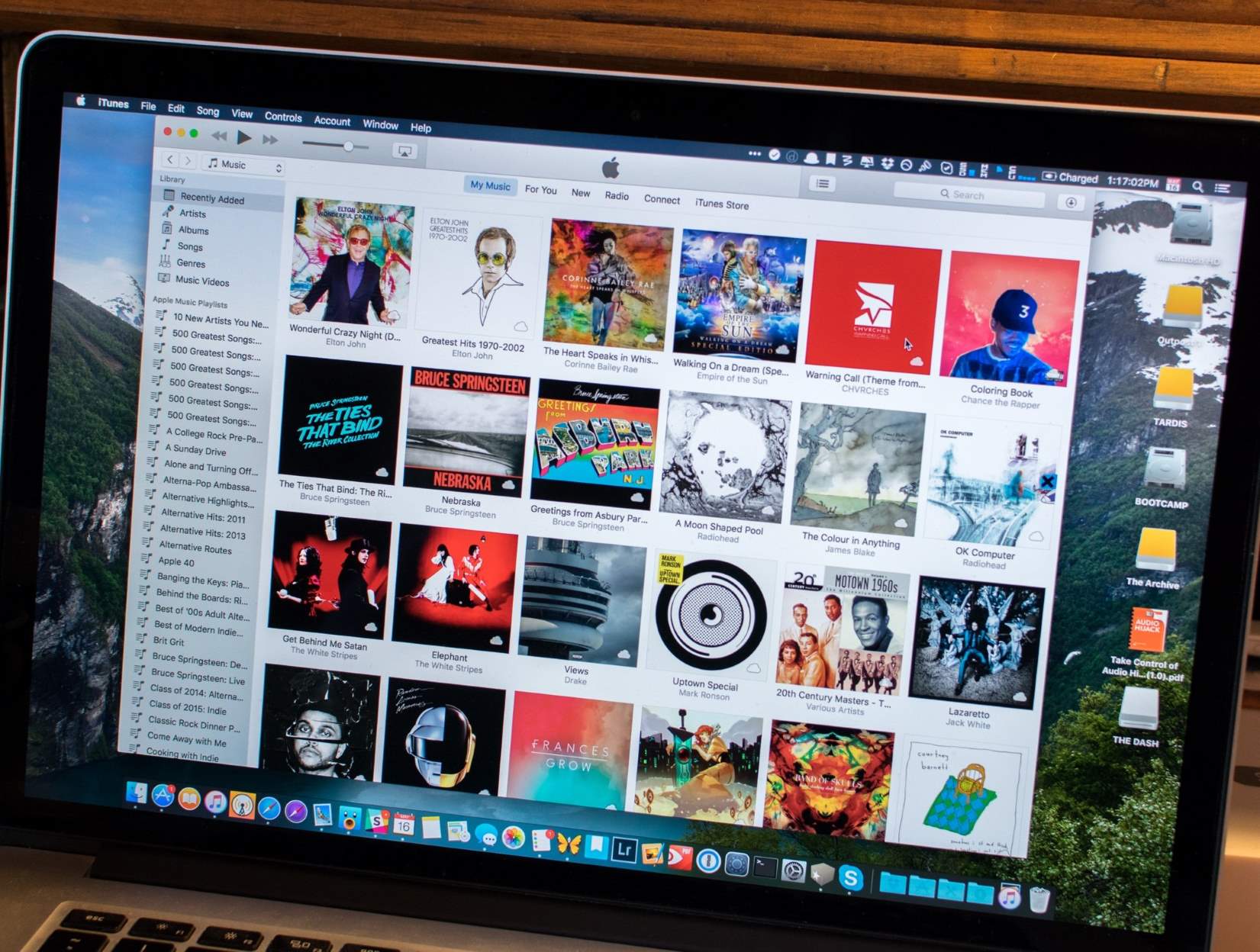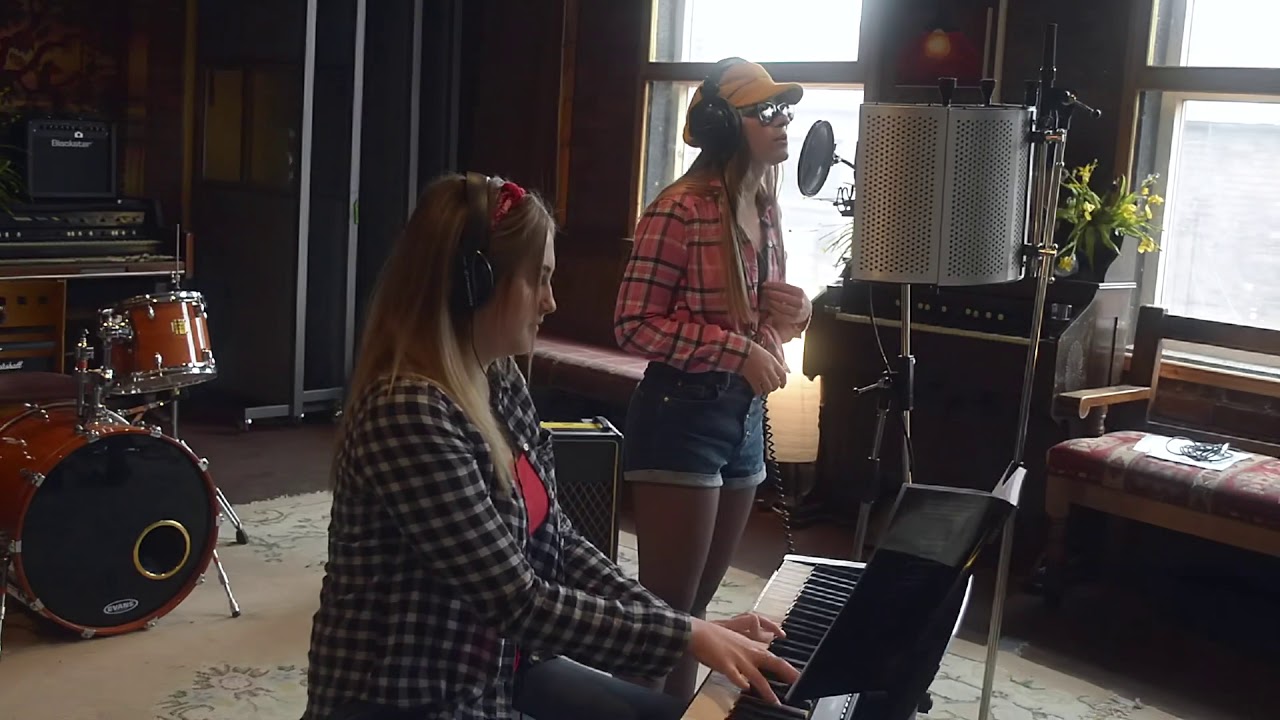Home>Production & Technology>Cover Song>How Much Of A Cover Song Can You Use In An Original Song
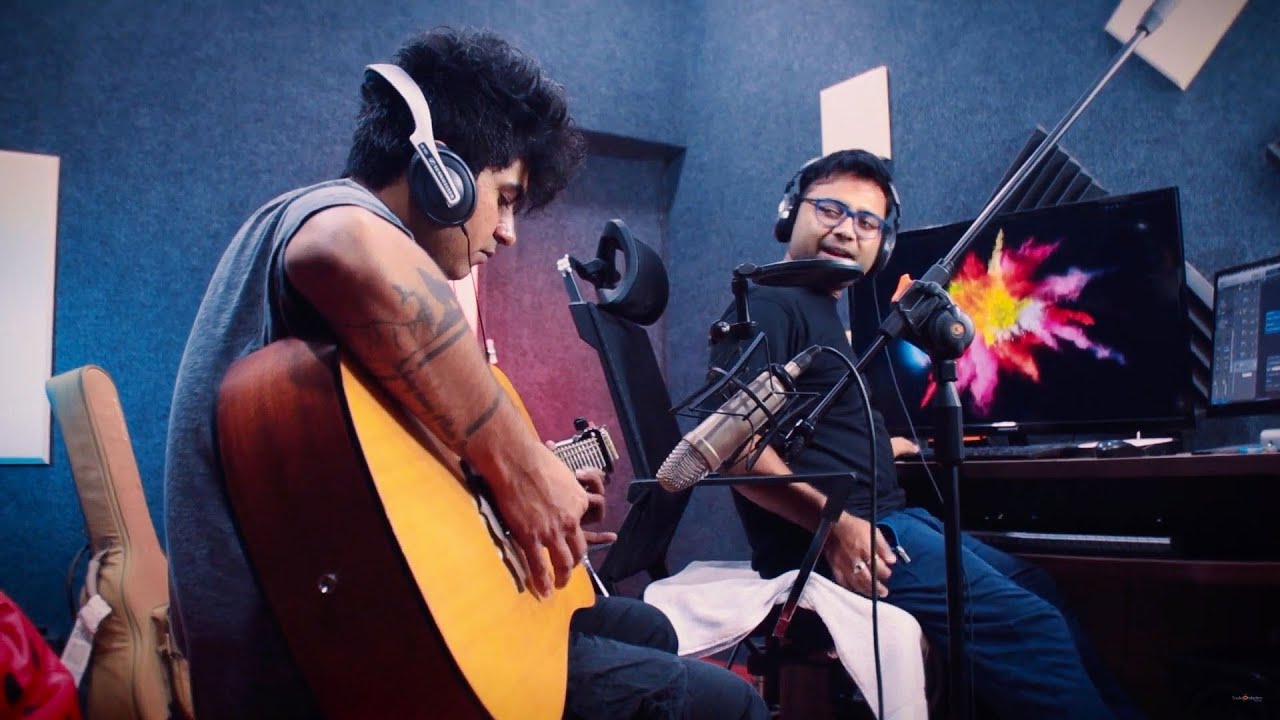

Cover Song
How Much Of A Cover Song Can You Use In An Original Song
Modified: January 22, 2024
Wondering how much of a cover song you can include in your original song? Find out the limits and legal considerations surrounding cover songs to avoid copyright issues.
(Many of the links in this article redirect to a specific reviewed product. Your purchase of these products through affiliate links helps to generate commission for AudioLover.com, at no extra cost. Learn more)
Table of Contents
- Introduction
- What is a cover song?
- Copyright laws and cover songs
- How much of a cover song can you use in an original song?
- Factors to consider when using a cover song in an original song
- Permission and licensing requirements for using a cover song in an original song
- Potential consequences of not obtaining permission for using a cover song in an original song
- Examples of successful use of cover songs in original songs
- Conclusion
Introduction
Music has always been a reflection of society and culture, with artists drawing inspiration from various sources to create their own unique sound. One way musicians pay homage to their influences is by performing cover songs, where they reinterpret and perform a pre-existing song in their own style.
A cover song, as the name suggests, is a new rendition or version of an already existing song, typically recorded and performed by a different artist or band. It allows artists to showcase their creativity while paying tribute to the original songwriter’s work.
However, when it comes to using a cover song in an original composition, there are certain legal aspects and considerations to keep in mind. Copyright laws dictate the rights and permissions needed to utilize someone else’s work in a new piece of music.
In this article, we will explore the question, “How much of a cover song can you use in an original song?” We will delve into the relevant copyright laws, the factors that come into play when using a cover song in an original composition, and the permissions and licenses required for such usage. So, let’s dive in and unravel the intricacies of the relationship between cover songs and original compositions.
What is a cover song?
A cover song is a new rendition or interpretation of an already existing song, usually performed by a different artist or band. It is a way for musicians to pay homage to their favorite songs, artists, or genres, while also putting their own unique spin on the music.
When artists perform a cover song, they may choose to stay faithful to the original arrangement and style or completely reimagine the song, adding their own artistic flair. Cover songs can range from straightforward renditions where the performer stays true to the original composition, to creative reinterpretations that offer a fresh perspective on the source material.
Cover songs have been a part of the music industry for decades, and they serve several purposes. For aspiring artists, performing cover songs can be a way to gain experience, connect with audiences, and showcase their vocal or instrumental abilities. It’s also an opportunity for musicians to engage with their fan base, as familiar songs can evoke a sense of nostalgia and create a strong connection with listeners.
Moreover, cover songs can serve as a marketing tool, allowing artists to leverage the popularity and recognition of well-known songs to attract new listeners. They can provide a gateway for fans to discover an artist’s original music and explore their unique artistic vision.
It’s important to note that cover songs are not limited to a specific genre or era. Artists from various musical backgrounds have covered songs across different styles, from classical music to rock, pop, hip-hop, and beyond. In fact, cover songs have often played a pivotal role in introducing new generations to beloved classics.
Overall, cover songs are a powerful tool for musicians to express their creativity, connect with their audience, and pay homage to the artists and music that have inspired them. They can be a source of joy and excitement for both the performers and the listeners, serving as a bridge between the past and the present in the ever-evolving world of music.
Copyright laws and cover songs
Copyright laws play a crucial role in the world of music, protecting the rights of songwriters and ensuring they are properly credited and compensated for their creative works. When it comes to cover songs, these laws dictate the permissions and licenses required to use someone else’s copyrighted material.
Under copyright laws, the original songwriter or composer holds exclusive rights to their work, including the right to reproduce, distribute, and perform the song. This means that if you want to perform or record a cover song, you generally need permission from the copyright holder.
One common misconception is that you can freely use a certain percentage of a song without obtaining permission. In reality, there is no fixed percentage or “magic number” that determines how much of a cover song you can use. The copyright law does not explicitly state a specific threshold for how many seconds or beats can be used without permission.
Instead, a cover song typically requires obtaining what is known as a mechanical license. This license grants you the right to reproduce and distribute the song in a new recording. Mechanical licenses can be obtained through music licensing agencies or directly from the copyright holder.
Additionally, you may also need a synchronization license if you plan to use the cover song in a visual medium, such as a music video or a film. This license allows you to synchronize the song with visual images and requires permission from both the copyright holder of the song and the copyright holder of the visual content.
It’s important to note that copyright laws can vary from country to country, so it’s essential to familiarize yourself with the specific regulations in your jurisdiction. Some countries have specific exemptions or fair use provisions that allow for limited use of copyrighted material, but these exceptions are often narrow and subject to interpretation.
Moreover, it’s worth mentioning that obtaining the necessary licenses for using a cover song in an original composition can involve a certain cost. The copyright holder may require payment of royalties or licensing fees, which can vary depending on factors such as the popularity of the original song and the intended use of the cover version.
In summary, copyright laws play a crucial role in determining the permissions and licenses required to use cover songs. Obtaining the proper licenses for reproducing, distributing, and performing a cover song is essential to ensure compliance with copyright regulations and to respect the rights of the original songwriter or composer.
How much of a cover song can you use in an original song?
The question of how much of a cover song you can use in an original song is a complex one, as there is no definitive answer that applies to all situations. The amount of a cover song that can be used in an original composition depends on various factors, including copyright laws, permissions, and the nature of the usage.
When it comes to using a cover song in an original composition, it’s important to consider the concept of “sampling.” Sampling refers to the practice of taking a portion of an existing song and incorporating it into a new composition. However, sampling often requires obtaining explicit permission from the owner of the original song’s copyright.
While there is no specific threshold for how much of a cover song you can use without permission, it’s generally safer to err on the side of caution and seek the necessary licenses. The length and significance of the portion used, as well as the impact on the market value of the original song, can influence whether your usage falls within fair use or requires explicit permission.
In cases where you want to incorporate a recognizable portion of a cover song into your original composition, it’s advisable to obtain a sample clearance from the copyright holder of the original song. This ensures that you are legally covered and can proceed with your creative endeavors without facing legal ramifications.
However, it’s worth noting that creative transformation plays a crucial role in determining the extent of usage. If you significantly modify or transform the original material, creating something new and distinct, it may fall under the realm of fair use. Fair use allows for limited use of copyrighted material without obtaining permission, but its application is subjective and context-dependent.
Ultimately, it is essential to consult a legal professional or music licensing agency to ensure you are properly licensed when using a cover song in an original composition. They can guide you through the process of obtaining the necessary permissions and licenses, ensuring compliance with copyright laws and helping you create within the boundaries of the law.
Remember, while using a cover song in an original composition can add depth and familiarity to your music, it’s crucial to respect the rights of the original songwriter and seek proper authorization to avoid potential legal issues.
Factors to consider when using a cover song in an original song
When incorporating a cover song into an original composition, there are several important factors to consider. These factors help determine the legality and ethicality of your usage, and they play a crucial role in ensuring you respect the rights of the original songwriter while creating something new and original. Here are some key considerations:
1. Copyright laws: Familiarize yourself with copyright laws in your jurisdiction and understand the rights and permissions needed to use a cover song in an original composition. Different countries may have varying regulations, so it’s essential to be aware of the specific legal requirements.
2. Permissions and licenses: Determine whether you need to obtain a mechanical license or synchronization license to legally use the cover song in your original composition. Research the necessary permissions and licenses and ensure you follow the correct process for obtaining them.
3. Duration and significance: Consider the length and significance of the portion you wish to use from the cover song. Using a small, unrecognizable snippet may have different implications compared to incorporating a substantial and recognizable portion. The more substantial the usage, the greater the likelihood that you will need explicit permission.
4. Impact on market value: Analyze how your usage of the cover song in your original composition may affect the market value of the original work. If your usage significantly impacts the potential market for the cover song, it may require explicit permission to avoid infringing on the original songwriter’s rights.
5. Transformative nature: Evaluate whether your usage transforms the original material into something new and distinct. If your incorporation of the cover song creates an entirely different artistic expression, you may have a stronger argument for fair use or creative transformation.
6. Potential for confusion: Consider the possibility of confusion among listeners. If your usage of the cover song creates a misleading impression that the original artist endorses or is associated with your work, it may lead to legal issues. Take care to avoid any potential confusion or misrepresentation.
7. Seek legal guidance: When in doubt, consult with a legal professional or music licensing agency. They can provide guidance and expertise in navigating the complexities of copyright laws and help ensure you are properly licensed and compliant with regulations.
By carefully considering these factors, you can make informed decisions and create a harmonious balance between your original composition and the inclusion of a cover song. It’s important to prioritize respecting the rights of the original songwriter while still being able to express your creativity and musical vision.
Permission and licensing requirements for using a cover song in an original song
When using a cover song in an original composition, obtaining the necessary permissions and licenses is crucial to ensure compliance with copyright laws and respect the rights of the original songwriter. Here are the key permission and licensing requirements to consider:
Mechanical License: A mechanical license grants you the right to reproduce and distribute a cover song in a new recording. This license is typically needed when you plan to release your original composition that incorporates a cover song. You can obtain a mechanical license from the copyright holder or through a music licensing agency.
Synchronization License: If you intend to use the cover song in a visual medium, such as a music video or a film, you may need a synchronization license. This license allows you to synchronize the cover song with visual images. It requires permission from both the copyright holder of the original song and the copyright holder of the visual content.
Clearance from the Copyright Holder: It’s essential to seek explicit permission from the copyright holder of the cover song before incorporating it into your original composition. This permission can be obtained through direct communication or by working with a music publisher or licensing agency.
Consideration of Royalties and Licensing Fees: In many cases, using a cover song in an original composition may involve paying royalties or licensing fees to the copyright holder. The specific costs vary depending on factors such as the popularity of the original song and the intended use of the cover version. Ensure you understand and fulfill any payment obligations associated with the usage of the cover song.
Proper Documentation: When you obtain permission and licenses for using a cover song, it’s important to maintain accurate documentation of the agreements and permissions granted. This documentation serves as evidence that you have obtained the necessary rights and can help protect you in case of any disputes or legal issues in the future.
It’s important to note that the process of obtaining permission and licenses can be complex and time-consuming. It may involve negotiating terms, signing contracts, and complying with specific requirements set by the copyright holders. Therefore, it’s advisable to consult with a legal professional or music licensing agency to ensure you navigate the process correctly and adhere to all legal obligations.
Failure to obtain the proper permissions and licenses for using a cover song in an original composition can lead to legal consequences, including infringement claims and potential financial penalties. Respect for copyright laws and the rights of the original songwriter is vital in the music industry, and obtaining permission and licenses demonstrates your commitment to honoring these rights.
By fulfilling the necessary permission and licensing requirements, you can use a cover song in your original composition confidently, knowing that you are within the confines of the law and showing respect for the creative works of others.
Potential consequences of not obtaining permission for using a cover song in an original song
Using a cover song in an original composition without obtaining the necessary permission can have serious legal and financial consequences. Here are the potential risks and repercussions of not obtaining permission for using a cover song:
1. Copyright Infringement: By using a cover song without permission, you may be infringing on the original songwriter’s copyright. Copyright infringement occurs when you use someone else’s copyrighted material without authorization, and it can lead to legal action against you.
2. Legal Action: The original songwriter or their representatives may file a lawsuit against you for copyright infringement. If found guilty, you could be liable for damages, including fines, legal fees, and potential compensation to the copyright holder for any financial losses incurred due to the unauthorized usage.
3. Cease and Desist Orders: The copyright holder may issue a cease and desist order, demanding that you stop using the cover song immediately. This order may come with threats of further legal action if you fail to comply. Ignoring a cease and desist order can worsen the legal consequences you may face.
4. Loss of Income and Reputation: If you release a composition that incorporates a cover song without permission, you may lose out on potential income from your work. Platforms such as streaming services and music distributors may take down your content or refuse to distribute it due to copyright concerns. This can harm your professional reputation and limit your opportunities for exposure, collaboration, and monetization.
5. Damage to Relationships: Unauthorized use of a cover song can damage relationships with the original songwriter, their record label, publishing company, or other industry professionals. This can impact future collaborations, licensing opportunities, and credibility within the music industry.
6. Negative Publicity: Infringing on someone’s copyright can lead to negative publicity and damage your public image. The music community and fans may view such actions unfavorably, leading to a loss of support and potential backlash against your work.
7. Limited Creative Opportunities: The use of unauthorized cover songs may limit your creative opportunities, as many platforms and organizations require proper licensing and permission before featuring or promoting music. Without the necessary permissions, you may be excluded from collaborations, events, or opportunities that require legal compliance.
It is crucial to understand the potential consequences of using a cover song without permission and the importance of respecting the rights of original songwriters. Obtaining the proper permissions and licenses not only protects you from legal trouble but also demonstrates professionalism, integrity, and respect for the creative works of others.
If you are unsure about the permissions and licensing requirements for using a cover song, it is advisable to consult with a legal professional or music licensing agency. They can provide guidance and ensure you navigate the process correctly, protecting you from potential legal and reputational risks.
Examples of successful use of cover songs in original songs
Throughout the history of music, there have been numerous instances where artists have successfully incorporated cover songs into their original compositions. These examples showcase how cover songs can be creatively utilized to enhance and bring new life to a piece of music. Here are a few notable examples:
1. “Respect” by Aretha Franklin: Originally recorded by Otis Redding, Aretha Franklin’s version of “Respect” became a timeless anthem that propelled her to stardom. Franklin’s powerful rendition transformed the song into a feminist anthem that resonated with a broad audience, while still paying homage to the original version.
2. “All Along the Watchtower” by Jimi Hendrix: Originally written and performed by Bob Dylan, Jimi Hendrix’s cover of “All Along the Watchtower” took the song to new heights with his electrifying guitar solos and distinctive vocal style. Hendrix’s version is often regarded as the definitive rendition, showcasing his unique interpretation of Dylan’s lyrics.
3. “Hallelujah” by Jeff Buckley: Although written by Leonard Cohen, Jeff Buckley’s rendition of “Hallelujah” introduced the song to a wider audience and became an enduring classic. Buckley’s emotive vocals and delicate guitar work brought a new depth and vulnerability to the already profound lyrics, resulting in a haunting and captivating performance.
4. “I Will Always Love You” by Whitney Houston: Originally written and performed by Dolly Parton, Whitney Houston’s cover of “I Will Always Love You” for the film “The Bodyguard” became one of her signature songs. Houston’s powerful vocals and impassioned delivery turned the song into a heartfelt ballad that became a global hit and solidified her place as one of the greatest vocalists of all time.
5. “Smooth Criminal” by Alien Ant Farm: Alien Ant Farm’s energetic and alternative rock version of Michael Jackson’s “Smooth Criminal” brought a fresh and edgy take on the iconic pop hit. The band’s distinctive sound and heavier instrumentals transformed the song into a modern rock anthem, capturing the attention of a new generation of listeners.
These examples highlight how artists can creatively reimagine cover songs, incorporating their own unique style and interpretation while still acknowledging the original songwriter’s contribution. Successful covers can help introduce a song to new audiences, breathe new life into a familiar tune, and showcase the creative prowess of the artist performing the cover.
However, it’s important to note that even with successful examples, obtaining the necessary permissions and licenses is crucial to ensure legal compliance and respect for the rights of the original songwriters. By doing so, artists can fully enjoy the creative freedom and opportunities that come with incorporating cover songs into their original compositions.
Conclusion
Cover songs offer a unique opportunity for artists to pay homage to their musical influences while showcasing their own creativity. However, when incorporating a cover song into an original composition, it is essential to navigate the legal and ethical aspects responsibly.
Copyright laws dictate the permissions and licenses required to use cover songs in original compositions, and there is no fixed percentage or threshold that determines how much of a cover song can be used without permission. Seeking the necessary permissions and licenses, such as mechanical licenses and synchronization licenses, is crucial to ensure compliance with copyright regulations and respect for the rights of the original songwriters.
Failing to obtain permission can lead to potential legal consequences, including copyright infringement claims, lawsuits, and damage to one’s reputation. It can also limit opportunities for income, collaboration, and creative growth in the music industry.
Examples of successful use of cover songs in original compositions, such as Aretha Franklin’s “Respect” and Jimi Hendrix’s “All Along the Watchtower,” demonstrate the transformative power of cover songs when approached with creativity and respect. These examples showcase the potential for cover songs to bring new life to a piece of music while still honoring the original songwriter’s contributions.
In conclusion, when using a cover song in an original composition, it is essential to consider the relevant factors, seek permission and licenses, and stay within the boundaries of copyright laws. Consulting with legal professionals or music licensing agencies can provide essential guidance and ensure that artists navigate the process correctly.
By approaching cover songs with integrity and respect for the rights of the original songwriters, artists can create meaningful and compelling compositions that pay tribute to their influences while showcasing their own unique artistic vision. With the proper permissions and licenses in place, the fusion of cover songs and original compositions can lead to captivating music that resonates with audiences around the world.

